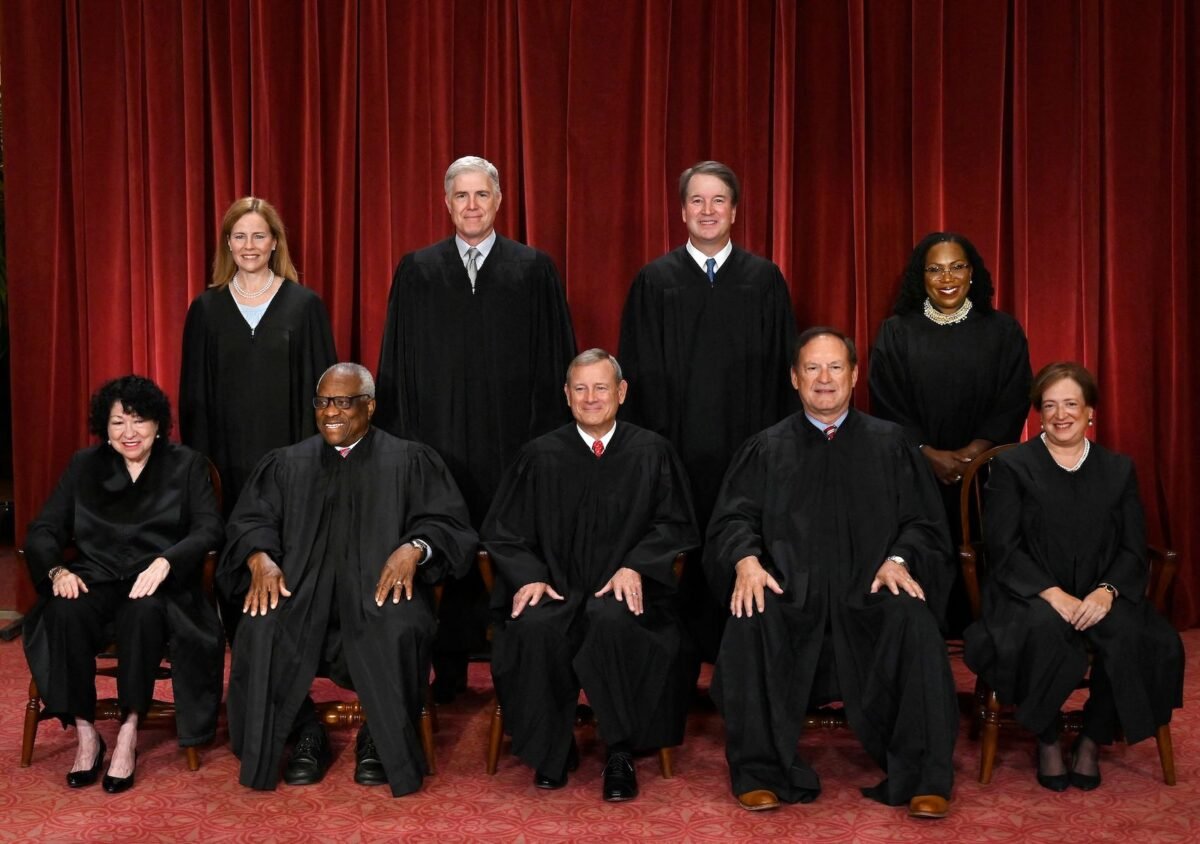How ‘single woke females’ are reshaping the US
Soccer Moms are giving way to Single Woke Females — the new “SWFs” — as one of the most potent voting blocs in American politics.
Unmarried women without children have been moving toward the Democratic Party for several years, but the 2022 midterms may have been their electoral coming-out party, as they proved the chief break on the predicted Republican wave. While married men, women and unmarried men broke for the GOP, CNN exit polls found that 68% of unmarried women voted for Democrats.
The Supreme Court’s August decision overturning Roe v. Wade was certainly a special factor in the midterms, but longer-term trends show that single, childless women are joining African Americans as the Democrats’ most reliable supporters.
Their power is growing thanks to the demographic winds. The number of never-married women has grown from about 20% in 1950 to more than 30% in 2022, while the percentage of married women has declined from almost 70% in 1950 to under 50% today. Overall, the percentage of married households without children has declined from 37% in 1976 to 21% today.

A new Institute for Family Studies analysis of 2020 Census data found that one in six women do not have children by the time they reach the end of their childbearing years, up from one in 10 in 1990. Single adult women now total some 42 million, comparable to the key African-American voting bloc (46 million), while vastly larger than key groups like labor-union members (14 million) or college students (20 million).
The Pew Research Center noted by 2019 that since 1960, single-person households in the United States have grown from 13% to 27%. Many, particularly women, are not all that keen on finding a partner. Pew recently found that “men are far more likely than women to be on the dating market: 61% of single men say they are currently looking for a relationship or dates, compared with 38% of single women.”
There’s clearly far less stigma attached to being single and unpartnered. Single women today have many impressive role models of unattached, childless women who have succeeded on their own — like Taylor Swift and much of the US women’s soccer team.
This phenomenon is not confined to the United States. Marriage and birthrates have fallen in much of the world, including Europe and Japan. Writing in Britain’s The Guardian, columnist Emma John observed that, “Singleness is no longer to be sneered at. Never marrying or taking a long-term partner is increasingly seen as a valid choice.”
The rise of SWFs — a twist on the personal-ad abbreviation for single white female — is one of the great untold stories of American politics. Distinct from divorced women or widows, these largely Gen-Z and millennial voters share a sense of collective identity and progressive ideology that sets them apart from older women. More likely to live in urban centers and to support progressive policies, they are a driving force in the Democratic Party’s and the nation’s shift to the left.
Attitudes are what most distinguish single women from other voters. An American Enterprise Institute survey shows that married men and women are far more likely than unmarried females to think women are well-treated or equally treated. As they grow in numbers, these discontented younger single women are developing something of a group consciousness. Nearly two-thirds of women under 30, for example, see what happens to other women as critical to their own lives. Among women over 50, this mindset shrinks to less than half.

The key driver of these attitudes may be universities, where feminist ideology often holds powerful sway. Women now predominate on college campuses. In the late 1960s they were about 39% of college graduates; now they are about 59%. The percentage of full-time female professors has risen dramatically; at the full professor level, the percentage has grown by roughly one-third.
Women now earn more than half of advanced degrees, not only in education but health and medical sciences, and are making great strides in engineering and law. With this growth, a feminist agenda has become increasingly de rigueur in colleges. According to the National Center for Education Statistics, the number of women’s and gender studies degrees in the United States has increased by more than 300% since 1990, and in 2015, there were more than 2,000 degrees conferred.
More recently, anti-family attitudes have become more pronounced. “Queer studies” often advocate replacing the “nuclear family” with some form of collectivized child-rearing. Progressive groups like Black Lives Matter made their opposition to the nuclear family a part of their basic original platform, even though evidence shows family breakdown has hurt African-American boys most of all.
We are witnessing, as sociologist Daniel Bell noted a half-century ago in “The Coming of the Post-Industrial Society,” a new type of individualism, unmoored from religion and family, something fundamentally transforming the foundations of middle-class culture.
There is a clear economic divergence between married and unmarried women, if for no other reason than that two incomes provide more resources and children present different demands. There are plenty of renting couples and home-owning singles, but married people account for 77% of all homeowners, according to the Center for Politics. Married women tend also to do far better professionally and economically, and their rate of marriage has remained constant while those without spouses have declined by 15% over the past four decades, notes the Brookings Institution. Single-parent households, they find, do far worse.
This economic reality impacts political choices. Not part of an economic familial unit, they tend to look to government for help, whether for rent subsidies or direct transfers. The pitch of Democratic presidents as reflected in Barack Obama’s “Life of Julia” and Joe Biden’s “Life of Linda” — narratives that advertised the government’s cradle-to-grave assistance for women — is geared toward women who never marry, with the occasional child-raising addressed not by family resources but government transfers.

Critically, unmarried women also tend to be employed heavily in “helping professions” like medical care and teaching, an expanding field even as many traditional male jobs, particularly in manufacturing, construction, and transportation, have disappeared. Whereas high taxes and regulation pose problems in the general economy, women predominate in fields that actually benefit from more government spending. This now includes the once GOP-leaning medical profession, nurses as well as doctors who now lean Democratic. In contrast, heavily male professions like engineers, masons, and police officers tend toward the GOP.
These differences are also showing up in backlashes against left-wing education policy, epitomized by such programs as Drag Queen Story Hour for K-12 students. Parents have been at the forefront of movements to replace progressive school board members from Virginia to California.
The divisions between married and unmarried women are reinforced and amplified by the geographic divisions in the country — what some call “the big sort” — as Americans increasingly settle into distinct communities of like-minded individuals. Urban centers, for example, are particularly friendly to singles. In virtually all high-income societies, high-density today almost always translates into low fertility rates, led by San Francisco, LA, Austin and Boston.
In urban cores like Manhattan, single households constituted nearly 50% of households, according to American Community Survey 2019 data. And with many businesses and cultural opportunities moving away from cities and diffusing and becoming more diverse and family-friendly with varied amenities, the polarization between cities and their narrowly left residents and the rest of the nation may increase.
According to the recent AEI data, even married women in the Northeast are conservative. This gap, unsurprisingly, widens in the South and Midwest. But the major divides are in terms of type of community. Married women in urban settings are evenly split between conservative and liberal, but among single women, just 18% are conservative with 44% liberal (the rest identify as moderate or refused to say).

In the suburbs, the key political battleground, 35% of married women are conservative and 22% liberal. Of unmarried women, 23% are conservative and 34% are liberal. In rural areas, 42% of married women are conservative compared to 14% liberal while single women divide evenly.
In the near future, American politics, both national and local, may turn on the degree to which people remain single, and also whether they decide to have children. Right now, the short-run demography favors the Democrats. People are getting married at the lowest rate in American history and the birth rate remains depressed. The longer people stay single, and perhaps never marry, the better things will be for the Democrats.
The wild card may be age — specifically, whether historic patterns hold and women, like men, tend to become conservative as they get older. This is hard to gauge as the evolution has usually taken in place the context of marriage and motherhood. Unmarried women, in particular, may hold onto their youthful ideology far longer than those whose lives are transformed by marriage and parenting.
Some women in particular embrace singleness not just as a lifestyle, but a chance to redefine the role of women in society. Author Rebecca Traister, herself married with children, has followed this movement, calling it a “a radical upheaval, a national reckoning with massive social and political implications . . . a wholesale revision of what female life might entail.”
“We are living through the invention of independent female adulthood as a norm, not an aberration,” she adds, “and the creation of an entirely new population: adult women who are no longer economically, socially, sexually or reproductively dependent on or defined by the men they marry.”
Ultimately the question remains what kind of society Americans want to have. Historically, here in the US and elsewhere, the family perspective has generally been prevalent and tied intimately to the sense of a common polity. But as the country changes and becomes ever more single and female-influenced, the historical pattern is likely to be challenged and significantly modified.
Joel Kotkin is Presidential Fellow in Urban Futures at Chapman University and executive director of the Urban Reform Institute. Samuel J. Abrams is a professor of politics at Sarah Lawrence College and a senior fellow at the American Enterprise Institute.
Reprinted with permission from RealClearInvestigations.




